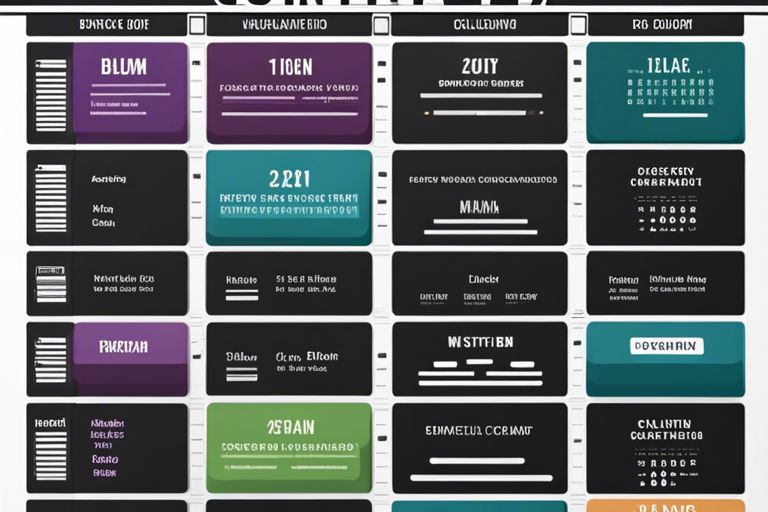#BlogPost Generating great content for a blog can be a daunting task, especially when aiming for evergreen value that stands the test of time. In the matter of brainstorming ideas for your blog, focusing on themes that are timeless and always relevant is key to achieving success. By honing in on topics that resonate with your audience and have a lasting appeal, you can create a library of blog posts that continue to drive traffic and engagement long after they are published. In this post, we will explore strategies for brainstorming themes that are sure to result in evergreen blog post success.
Key Takeaways:
- Identify Evergreen Topics: Look for themes that have long-term relevance and are always in demand by your target audience.
- Write Timeless Content: Create blog posts that provide valuable information that will be relevant for years to come, ensuring evergreen status.
- Focus on Quality: Prioritize creating high-quality, engaging, and well-researched content to establish your blog as a go-to resource in your niche.
Establishing Your Niche
Identifying Your Audience
For a successful evergreen blog, it is crucial to identify your target audience. Understanding who will be reading your content will help you tailor your posts to their interests and needs. Conduct market research, analyze demographics, and engage with your audience through surveys or social media to gain valuable insights. By knowing your audience inside and out, you can create content that resonates with them and keeps them coming back for more.
Leveraging Your Expertise
The key to establishing your niche and building credibility in the blogging world lies in leveraging your expertise. Share your knowledge, skills, and experiences through your evergreen content to position yourself as an authority in your field. Whether you are an expert in cooking, fashion, or personal finance, your unique perspective and insights can set you apart from the competition and attract a loyal following. Consistency in delivering high-quality, informative content will solidify your reputation as a go-to resource in your niche.
As a blogger, your expertise is your most valuable asset. Use it to create content that solves problems, answers questions, and provides valuable insights to your audience. Demonstrating your expertise consistently will build trust and credibility with your readers, establishing you as a go-to source in your niche.
Brainstorming Evergreen Themes
How to Generate Timeless Topics
There’s an art to brainstorming evergreen themes that will stand the test of time in the fast-paced world of blogging. To generate timeless topics, start by thinking about subjects that are relevant across various demographics and age groups. Consider overarching topics that have been popular over the years, such as health and wellness, personal finance, self-improvement, and relationships. These are areas that are always in demand and can be approached from various angles to keep your content fresh and engaging.
Balancing Trendy and Persistent Themes
On the one hand, it’s crucial to stay current and tap into trending topics to keep your blog current and attract new readers. On the other hand, focusing solely on trendy themes can quickly date your content. The key is to strike a balance between trendy and persistent themes. Consider incorporating evergreen topics within trending subjects to give your content a timeless appeal while staying relevant to current interests.
Plus, you can revisit past popular posts and update them with new information or a fresh perspective to keep them relevant. By combining the best of both worlds, you can create a blog that stands the test of time while staying fresh and engaging for your audience.
Writing for Longevity
Creating Content with Lasting Relevance
An crucial aspect of writing evergreen content is creating material with lasting relevance. Whether you are creating a blog post, video, or infographic, consider topics that will remain valuable over time. To get ideas, you can check out this resource with 11 Evergreen Content Ideas with Examples! for inspiration.
Updating Evergreen Posts to Maintain Freshness
With evergreen content, it’s crucial to update posts regularly to ensure they remain relevant and accurate. By refreshing statistics, updating examples, and adding new insights, you can maintain the freshness of your content and keep readers engaged over time.
Plus, search engines favor updated content, so regularly revisiting and enhancing your evergreen posts can boost your SEO rankings and drive more organic traffic to your site.
Maximizing Impact
Unlike other types of blog posts, evergreen content has the unique ability to withstand the test of time and continue to drive traffic to your website long after it’s been published. To learn more about the benefits and importance of creating evergreen blog content, check out Evergreen blog content: what it is, why you need it and how …
SEO Practices for Evergreen Content
An crucial aspect of creating evergreen content is to optimize it for search engines. Make sure to conduct thorough keyword research, incorporate relevant keywords naturally throughout the content, and focus on providing value to your audience. Additionally, pay attention to on-page SEO elements such as meta tags, headings, and internal linking to improve your content’s visibility and rankings on search engine results pages.
Promoting Evergreen Posts Effectively
Practices
Effectively promoting your evergreen posts is crucial to maximizing their impact and reach. Utilize social media platforms, email newsletters, and collaborations with other influencers to share your content and drive traffic to your website. Consider repurposing your evergreen content into different formats such as videos, infographics, or podcasts to cater to a wider audience and extend the lifespan of your posts.
Final Words
To wrap up, brainstorming ideas for evergreen blog post success is crucial for maintaining a steady stream of traffic and engagement on your blog. By focusing on timeless themes such as ‘How-to’ guides, listicles, case studies, and personal stories, you can create content that continues to be valuable and relevant to your audience for years to come. Remember to always consider your target audience, conduct thorough keyword research, and stay up-to-date on industry trends to ensure your content remains evergreen and resonates with readers. With a strategic approach to brainstorming ideas and themes, you can position your blog as a trusted resource and drive sustainable growth in your online presence.
FAQ
Q: What is the importance of brainstorming ideas for evergreen blog post success?
A: Brainstorming ideas is crucial for evergreen blog post success as it helps in generating timeless content that remains relevant and valuable to readers over a long period of time. By identifying popular themes and topics, you can create posts that attract consistent traffic and engagement.
Q: How can one effectively brainstorm ideas for evergreen blog posts?
A: To effectively brainstorm ideas for evergreen blog posts, consider conducting keyword research to identify trending topics, analyze your target audience’s interests and pain points, draw inspiration from industry news and updates, leverage social media trends, and seek feedback from readers or colleagues. This comprehensive approach can help generate a diverse range of compelling ideas.
Q: What are some common themes for evergreen blog posts that lead to success?
A: Some common themes for evergreen blog posts that lead to success include how-to guides, instructional tutorials, listicles (e.g., top 10 tips), case studies, expert interviews, product reviews, industry trends analysis, and actionable insights. By focusing on these themes and providing valuable information, you can create blog posts that have a lasting impact and drive continuous traffic to your site.










